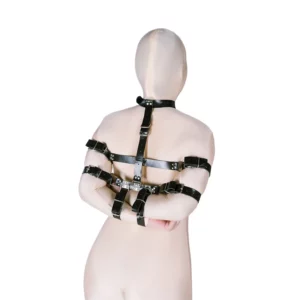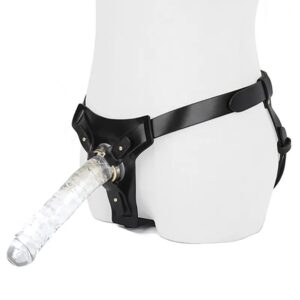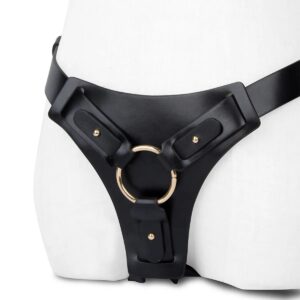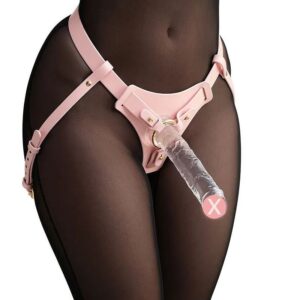What does fetish mean?
The term “fetish” has an intriguing history and a diverse range of interpretations. Derived from the French word “fétiche,” which, in turn, originates from the Portuguese “feitiço,” it initially referred to the veneration of objects believed to possess divine or magical attributes. Karl Marx later appropriated the term to describe the quasi-religious attachment humanity developed towards money, capital, and commodities under capitalism—though he held a negative view of this phenomenon.
In the late 19th century, psychologists began associating the concept of fetishism with sexuality, using it to describe fixations on specific body parts or materials. This understanding gained wider recognition in the early 20th century, thanks in part to Sigmund Freud’s work. Freud, too, classified such preferences as pathological or perverse.
While the general public often uses “fetish” to refer to various specific sexual practices, especially those within the BDSM realm, it’s important to clarify its precise meaning. Strictly speaking, sexual fetishism involves an intense fixation on certain objects, materials, or body parts. The World Health Organization narrows this definition down to deriving sexual pleasure from these objects. It’s worth noting that some people may casually claim to have a fetish when referring to a strong liking for something, but true fetishism involves a much deeper level of fixation.
Distinguishing Fetishism from BDSM and Kink
The boundaries between fetishism, BDSM, and kink are fluid, with overlapping sexual deviations leading to a shared subculture. While there’s no clear demarcation, there are prioritized distinctions.
Imagine a continuum with BDSM on one end, centered around power imbalances. On the other extreme lies object-based sexual fetishism, which doesn’t necessitate a partner and can be the sole form of sexual activity. Everything in between is possible along this spectrum.
For some, a diaper fetish only becomes complete when they engage in childlike behavior under the dominance of another person. A submissive person who experiences intense stimulation from licking another person’s feet during humiliation might subsequently become aroused by the mere thought of feet.
Kinks, on the other hand, encompass general preferences for certain physical or psychological practices along this spectrum. For example, urine (pee) can be a fetish on its own or incorporated into BDSM. Or it can be both. Therefore, BDSM and fetishism can be seen as the poles of a shared world interconnected by kinks, offering much to explore.
How is a fetish formed?
Since research in this area is limited, there exist only theories and incomplete concepts. The most plausible theory suggests that every human is inherently predisposed to a sexual fetish. However, a fetish only develops when a specific key stimulus and sexual arousal coincide, leading the brain to permanently associate the two.
Contradicting this theory is the fact that, if true, more people would develop fetishes and diversity would be higher. Furthermore, the theory fails to explain why fetishism is more common among men than women. Nor does it address why a fetish rarely fades over time.
A fetish can emerge at any point in life. Some discover their inclination early in childhood, others during puberty, and some much later in adulthood. A fetish can also change over time or be supplemented by new ones.
What fetishes are there?
Essentially, anything can be a fetish. It’s worth noting that some fetishes are more prevalent than others. Common ones are linked to specific items of clothing like shoes, stockings, and uniforms. Material also plays a significant role. In addition to latex and leather, silk, nylon, or fur are also favored by many.
Fetishism related to specific body parts often, though not always, accompanies submissive behavior. The most well-known and widespread is the foot fetish. Some fetishists find armpits, ears, or other specific body parts intensely alluring.
Object fetishes, such as balloons, trees, machines, radios, or pedal pumping, have gained a certain degree of recognition. These inclinations are often featured in articles with provocative titles like “The 10 Most Unusual Sexual Preferences,” presumably to entertain readers. Remarkably, there are cases of women developing affection for objects like the Eiffel Tower or the Berlin Wall beyond their sexual allure.
When is a fetish pathological?
The question revolves around where sexual preference ends and a genuine disorder begins. As captivating as a fetish can be, once sexual fantasies infringe upon others without consent or cause harm to oneself or others, a limit is breached. The same applies if a fetish becomes so essential and irreplaceable for sexual arousal that it causes significant distress for the individual. Additionally, one should be cautious of fetishes that pose health or life risks, such as involving fecal matter.








